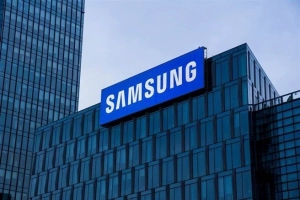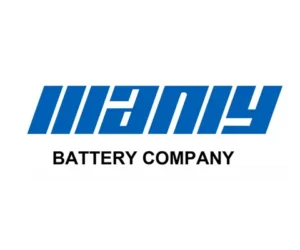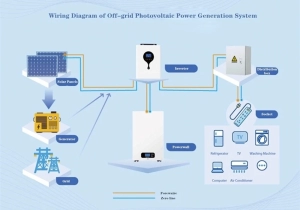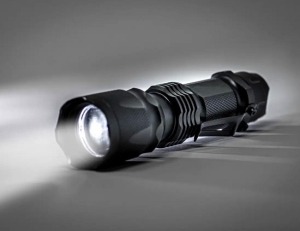2025 Charging LiFePO4 Battery: Step-by-Step Guide
Table of Contents
- 2025 Charging LiFePO4 Battery: Step-by-Step Guide
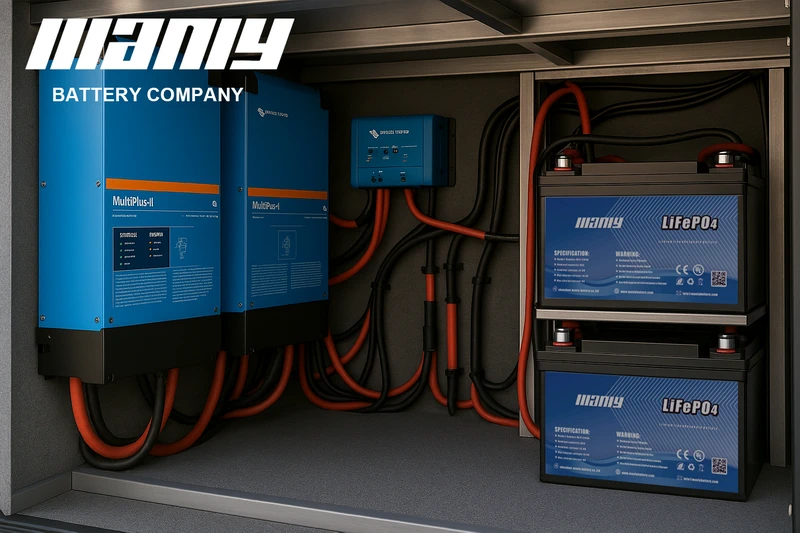
The Charging Process
If you rely on LiFePO4 batteries to power your RV, solar setup, golf cart, or backup system, charging them correctly is non-negotiable. Using the wrong method or charger can shorten their lifespan or even damage them permanently. This article is for DIY users, technicians, fleet operators, and energy storage enthusiasts who want a clear, technical breakdown of how charging a LiFePO4 battery works and what differentiates it from lead-acid systems.We’ll explain how the charging process unfolds, why bulk and absorption stages matter, and what charger settings you should use based on your battery voltage—whether it’s 12V, 24V, or 48V. Let’s get into the details.1. How Charging Works Inside a LiFePO4 Battery
Charging a LiFePO4 battery isn’t just about plugging it in. Internally, it involves shifting lithium ions from the cathode to the anode. This reverses the process during discharge and re-stores usable energy in the cells.To manage this, the LiFePO4 battery charger delivers current in two distinct stages:- Bulk charging: Fast and steady current input raises the battery’s voltage.
- Absorption charging: A fixed voltage phase where the current gradually decreases until the battery is full.
- Recommended charge voltage per LiFePO4 cell: 3.50V – 3.65V
- Recommended total voltage for a 12V battery: 14.4V
- For 24V systems: 28.8V
- For 48V systems: 57.6V
2. Understanding Bulk and Absorption Charging
LiFePO4 batteries follow a streamlined two-stage charging algorithm: bulk and absorption. There’s no third-stage float mode like you’ll find with SLA or AGM batteries. Here’s how each phase works in detail:2.1 Bulk Charging: Fast Power DeliveryDuring bulk charging, the charger provides a constant current. The voltage rises from its resting level (around 13V for a 12V battery) up to the charger’s set limit—typically 14.4V.- For a 12V LiFePO4 battery charger, this means pushing the voltage to 14.2V–14.6V.
- A 24V LiFePO4 battery charger targets 28.0V–29.2V.
- A 48V LiFePO4 battery charger should aim for 56.0V–58.4V.
- For a 100Ah LiFePO4 battery, charging typically ends when the current drops below 2A (or 0.02C).
- This slow tapering protects the cells and maximizes usable capacity.
3. Can I Use a Standard Charger?
This is one of the most common questions—and for good reason.Short Answer: Sometimes, but it’s risky.Most standard chargers are built for lead-acid batteries and include a float stage. If the charger’s output voltage doesn’t match your battery’s charge profile—or if you can’t turn off the float mode—it can damage your LiFePO4 pack.Here’s what to check:- Output voltage range: This should match the LiFePO4 specs (14.0V–14.6V for 12V batteries).
- Charging algorithm: Look for CC/CV (constant current/voltage).
- Float disable option: The charger must skip the float phase or let you turn it off.
4. Using Solar to Charge LiFePO4 Batteries
Charging LiFePO4 batteries with solar is an excellent solution for off-grid applications, but you’ll need a compatible MPPT or PWM solar charge controller that supports lithium profiles.Here’s what to set:- Bulk/Absorption Voltage: 14.4V (12V battery), 28.8V (24V), or 57.6V (48V)
- Float Voltage (if required): Set to 13.6V or lower—or turn it off completely
- Charge Termination Current: Around 2% of battery capacity (e.g., 2A for 100Ah)
How to Charge a LiFePO4 Battery
Charging a LiFePO4 battery correctly isn't just about plugging in a charger—it's about preserving performance, protecting your system, and ensuring the long-term reliability of your energy investment. Whether you're powering an RV, running a solar setup, or managing commercial-grade energy storage, this guide explains how to charge a LiFePO4 battery correctly. We'll walk you through essential charging principles, technical steps, and best practices to help homeowners, off-grid users, and system integrators get the most out of every cycle.1. Understanding the CC/CV Charging Method
LiFePO4 batteries require a specific two-stage charging method: constant current/constant voltage (CC/CV). Unlike lead-acid batteries, which go through a bulk, absorption, and float cycle, LiFePO4 batteries do not need float or trickle charging. Overcharging can damage them.Constant Current PhaseIn the first stage, the charger supplies a steady current while the battery voltage gradually increases. This phase charges the battery to about 90% of its capacity. For example:- 12V LiFePO4 battery charger: target voltage is 14.4V (range: 14.0V to 14.6V)
- 24V LiFePO4 battery charger: target voltage is 28.8V (range: 28.0V to 29.2V)
- 48V LiFePO4 battery charger: target voltage is 57.6V (range: 56.0V to 58.4V)
2. Step-by-Step Guide to Charging LiFePO4 Batteries
Step 1: Choose the Right ChargerNot all chargers are safe for lithium batteries. A proper LiFePO4 battery charger should support CC/CV charging, match your system voltage, and avoid float charging.Step 2: Check the Voltage SettingsSet your charger to the correct charge voltage for LiFePO4 battery chemistry. Going above 3.65V per cell can lead to overheating and cell degradation. Refer to the voltage table above to ensure proper configuration.Step 3: Connect Safely- Turn off the charger before connecting.
- Connect the positive terminal first, then the negative.
- After confirming a solid connection, turn on the charger.
- The voltage doesn't exceed your system's rated max
- The current drops smoothly during the CV phase
- The charger stops or cuts back when the current nears zero
- Turn off the charger first.
- Disconnect the negative cable, then the positive.
- Store the battery or reconnect it to your system for use.
Choosing the Right Charger for LiFePO4 Batteries
Charging a lithium iron phosphate (LiFePO4) battery isn't just about plugging in any charger and walking away. If you want maximum performance, long life, and safe operation, pair your battery with the right charging solution. This section is for system designers, DIY users, and commercial operators who need clarity on what charger works best for charging LiFePO4 battery setups—whether for solar storage, mobility applications, or off-grid power.1. Do LiFePO4 Batteries Need a Special Charger?
LiFePO4 batteries need a special charger to match their unique charging profile. Unlike lead-acid batteries, which follow a three-stage charging pattern (bulk, absorption, float), LiFePO4 battery chargers use a two-stage algorithm—constant current (CC) followed by constant voltage (CV). This charging method safely fills the battery without overcharging or degrading the internal chemistry.An adequately designed LiFePO4 battery charger delivers power with tight voltage control, typically stopping around 14.6V for a 12V battery. It doesn't include a float charge mode, which is standard on many lead-acid chargers. Float charging can unnecessarily harm lithium chemistry by keeping the cells at a high state of charge.When choosing a charger, always confirm that the specifications align with the recommended charge voltage for LiFePO4 battery cells—usually between 3.50V and 3.65V per cell. For a full 12V pack (4 cells in series), that's 14.2V–14.6V total.2. Key Features of a LiFePO4 Battery Charger
A dedicated LiFePO4 battery charger includes several features that set it apart from standard units. Here's what to look for:- Correct voltage output: For a 12V LiFePO4 battery charger, expect a range of 14.0–14.6V. For 24V, it should output 28.0–29.2V, and for 48V, between 56.0–58.4V.
- Two-stage charging algorithm (CC/CV): Avoids overcharging and helps maintain optimal battery health.
- No float or trickle charge: These modes are unnecessary and even harmful for lithium batteries.
- Current-limiting circuitry: Prevents overheating and extends both charger and battery life.
- Thermal and voltage monitoring: Smart chargers adjust based on temperature or battery feedback, often via a BMS (Battery Management System).
- Compatibility with battery communication protocols: For large systems like rack-mount or residential energy storage, look for chargers that support CAN or RS485 to sync with innovative BMS units.
3. Can I Charge a LiFePO4 Battery with a Normal Charger?
You might ask, "Can I charge a LiFePO4 battery with a normal charger?" The answer is technically yes—but with significant caveats. While some standard lead-acid chargers may seem to work, they often use outdated charging curves that don't match the chemistry of LiFePO4 batteries.Here's what can go wrong:- Undervoltage charging: Lead-acid chargers often stop at 13.6–13.8V, leaving your lithium battery only 70–80% charged.
- Overcharging: Chargers with float mode can apply a continuous voltage that damages LiFePO4 cells over time.
- Unsafe current delivery: A charger without current control can overwhelm the BMS, especially in small-capacity batteries.
- Triggering BMS shutdown: Some "smart" chargers try to desulfate batteries by applying high-voltage pulses, which can cause lithium BMS systems to shut down or fail.
Practical Charging Methods for LiFePO4 Batteries
Whether setting up a home backup system, upgrading an RV, or running off-grid solar, knowing how to charge a LiFePO4 battery correctly is essential. This section will break down practical, real-world methods for safely and effectively LiFePO4 battery systems using AC, DC, solar, alternators, and more.1. AC/DC & Solar Charging Options
Most users rely on either traditional wall outlets or solar panels to keep their LiFePO4 battery systems running strong. Each method offers distinct benefits, but both require the proper setup.AC Charging (Wall Chargers)An AC-powered LiFePO4 battery charger is the easiest and most reliable method for daily use. Look for a model rated for your battery system—like a 12V LiFePO4 battery charger, 24V, or 48V option—with the correct voltage and current limits. For example:- A 12V battery should charge between 14.0V and 14.6V
- A 24V battery should charge between 28.0V and 29.2V
- A 48V battery should charge between 56.0V and 58.4V
- 14.4V for 12V systems
- 28.8V for 24V
- 57.6V for 48V systems
2. Charging on the Go: Alternators & Generators
When you're mobile—like in a van, boat, or camper—charging from an alternator or generator is convenient but comes with a few warnings.Alternator ChargingAlternators can provide fast power, but LiFePO4 batteries have much lower internal resistance than lead-acid ones. That means they'll try to draw as much current as possible, potentially overheating or damaging the alternator.To prevent this, use a DC-to-DC charger between your alternator and battery. These devices:- Regulate charge current
- Limit voltage to safe levels (14.4V–14.6V for 12V setups)
- Protect both the alternator and the LiFePO4 battery charger input
- Use an inverter generator for cleaner power
- Never charge without monitoring voltage and temperature
- Avoid overcharging—LiFePO4 batteries don't tolerate trickle charging
3. Parallel and Series Charging Best Practices
Large setups often include multiple batteries wired in series or parallel. While this increases voltage or capacity, it also demands more care during charging.Charging in ParallelWiring batteries in parallel increases capacity (Ah) but creates risks if not appropriately balanced. Follow these rules:- Keep all cables equal in length and gauge
- Use a busbar for even current distribution
- Limit charging current to what one battery can safely handle (e.g., 50A for a 100Ah battery)
- Balance batteries before series wiring
- Use a smart charger with series configuration settings
- Monitor voltages regularly with a quality battery monitor
How to Maintain LiFePO4 Battery Health in Cold Weather and Beyond
If you're using LiFePO4 batteries for solar energy storage, RVs, marine systems, or off-grid living, maintaining performance over time is just as important as installing the right system. This guide is for users who want to extend battery lifespan, especially under cold or challenging conditions. We'll walk through cold-weather charging best practices and key tips for monitoring battery health—so your investment stays reliable all year.1. Tips for Cold Weather Charging
Cold temperatures put extra strain on lithium batteries. When charging in freezing environments, you need more than a basic setup—you need the right tools and approach.Never charge below freezing without protection. Charging LiFePO4 batteries below 0°C (32°F) without a heating system can lead to lithium plating. This internal damage is irreversible and shortens the battery’s lifespan. That’s why many LiFePO4 battery chargers with cold-weather support include built-in temperature sensors to stop charging when it's too cold.Use self-heating or insulated batteries. Some advanced LiFePO4 battery models have a built-in self-heating function that draws energy from the charger to warm the cells above 41°F (5°C) before starting the charge. If your batteries don't include this feature, you can use external insulation blankets or heated enclosures.Apply the correct charge voltage. Even in cold weather, you must stay within the recommended charge voltage for LiFePO4 battery systems:- 12V LiFePO4 battery charger: 14.0V–14.6V
- 24V LiFePO4 battery charger: 28.0V–29.2V
- 48V LiFePO4 battery charger: 56.0V–58.4V
2. Monitoring & Maintaining Battery Health
Keeping an eye on your battery’s condition helps prevent unexpected failures and ensures that you get the full benefit of your LiFePO4 battery charger setup.- Watch for voltage imbalance: When using multiple batteries in parallel or series, ensure each unit stays within 50mV (0.05V) of the others. If one battery charges faster or slower than the rest, it can trip the system and shut everything down. Regularly balance batteries, especially after deep discharges.
- Use a brilliant charge/discharge routine: Avoid charging above 14.6V or draining below 10% state of charge (SOC). The ideal range is 10–90%, though many modern BMSs allow between 5–95% safe use. Sticking to this window can help your battery reach 4,000 to 6,000 cycles.
- Avoid float charging: Unlike lead-acid, LiFePO4 batteries don’t need a float or trickle charge. Once complete, stop charging. Over time, floating can lead to overcharge stress. That’s why users often ask, “Can I charge a LiFePO4 battery with a normal charger?” The short answer: Not safely. Always use a compatible LiFePO4 battery charger with a CC/CV (constant current/constant voltage) profile.
- Install a battery meter with SOC tracking: Voltage-based battery meters don't work well with lithium chemistry due to the flat discharge curve. Choose a current-based meter that calculates charge based on energy in/out. This setup gives an accurate readout of real-time capacity.
- Perform occasional deep cycle testing: About once every few months, fully charge and then discharge the battery under controlled conditions. This test helps recalibrate the battery monitoring system and exposes any weak cells.
- Check terminals and wiring: Loose or corroded connections increase resistance, generate heat, and reduce charging efficiency. Clean and torque connections regularly, mainly if you use your batteries in mobile or vibration-prone setups like boats, RVs, or golf carts.

